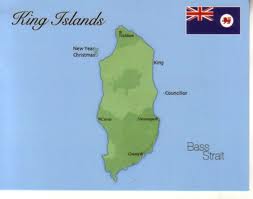Hydro Tasmania has dumped the idea of building a $2 billion wind farm on King Island, but still harbours dreams of providing “base load” renewable energy to the mainland.
The government-owned utility on Monday pulled the pin on the King Island projects, which had become controversial because it had been targeted by anti-wind campaigners, both local and imported from the mainland.
Hydro Tasmania CEO Steve Davy, however, argued that the decision to drop King Island, where it considered building 200 turbines with a capacity of around 600MW, was not the result of local opposition, or the uncertainty over the renewable energy target.
Instead, he argued, it was a simple case of the economics not working. The fall in the Australian dollar and other factors meant that the capital costs of the project had jumped by $150 million. “It is not economically viable,” he said.
To make matter worse, the cost of the cable to the mainland from King Island would have been more expensive than other options, and would not have reached the mainland at an ideal site – partly due to the removal of manufacturing capacity in Victoria.
The company will, however, continue to look at the possibility of building a second inter-connector, by laying a new high voltage underwater cable across Bass Strait. These options would be cheaper than the TasWind proposal.
As Davy told RenewEconomy in July, the company is still interested in the idea of using its plentiful wind resources and hydro capacity to offer “baseload” renewable energy to the mainland.
“We have exhausted all avenues by which this concept could progress and now do not believe it appropriate to continue with the feasibility study,” he said in a statement on Monday.
“We will now focus our resources on further investigating the benefits and viability of a second inter-connector across Bass Strait.”
Davy says the second inter-connector still offers the best opportunity for Tasmania to “maximise its position” as Australia’s “renewable energy powerhouse.”
Davy believes that Tasmania could provide the equivalent of 1,000MW of zero-emissions, baseload power generation for Victoria.
He said in July that it would require around 600MW of wind capacity – on either King Island or elsewhere – and if the size of the connection between Tasmania and the mainland could be doubled.”
“We think by that building more wind farms – maybe on King Island, combining that with our hydro plant and whole lot of wind power – we could turn Tasmania into a baseload power station for Victoria.”
But he also said then that it would need the 41,000GWh renewable energy target to be maintained, and not reduced to a 26,00GWh target as the Abbott government wants to do.
Hydro Tasmania had already undertaken preliminary work on the second inter-connector option – including potential market benefits, capital cost estimates, broad economic assessment of a range of options and their impact on Hydro Tasmania.
Davy said a second inter-connector could provide significant strategic advantages for Tasmania such as support for further renewable energy development, including increased output from hydropower and wind, as well as greater market competition.
However, while the King Island decision was not influenced by the outcome of the RET policy debate, a second inter-connector almost certainly would be.
“We are keenly interested in debate that happening in Canberra around the RET,” director of strategy and market development Andrew Catchpole told journalists. “Once we know the answer, we will know what we can do nationally and in Tasmania.
Catchpole said the RET uncertainty was affecting all renewable energy projects in Australia. He also said the reduction in demand from the grid was mostly driven by the high uptake of solar panels. He said the slowdown in the manufacturing sector was a secondary factor.











